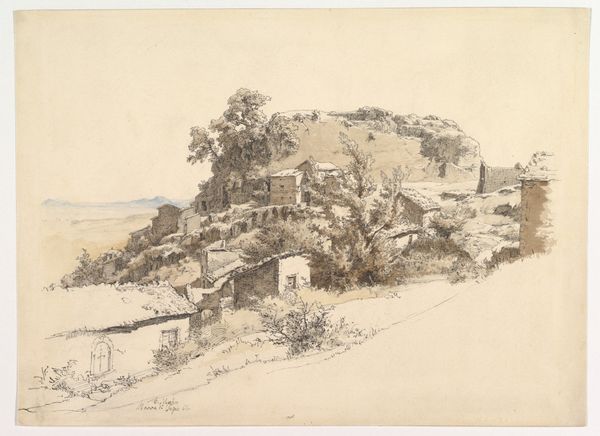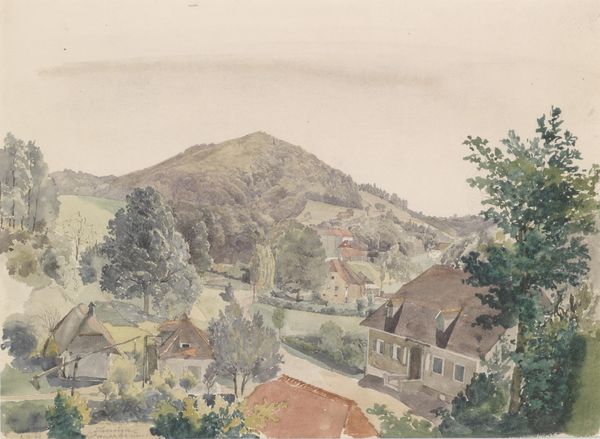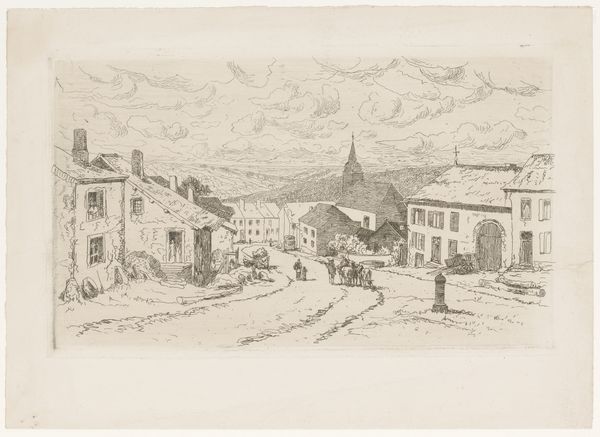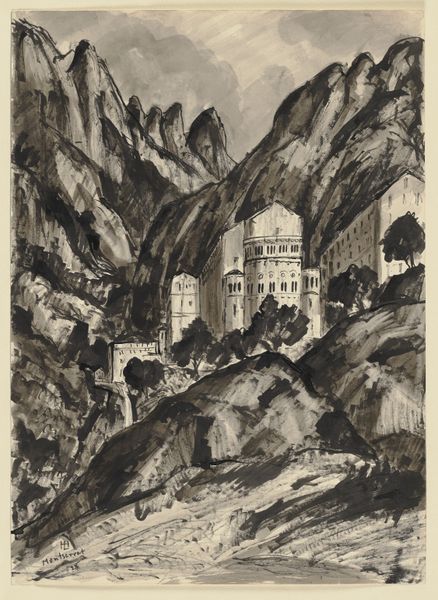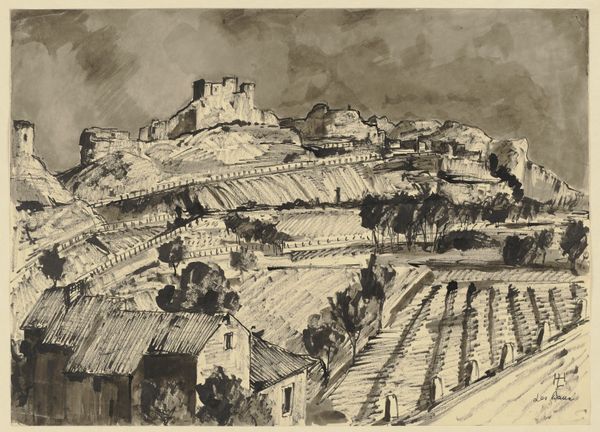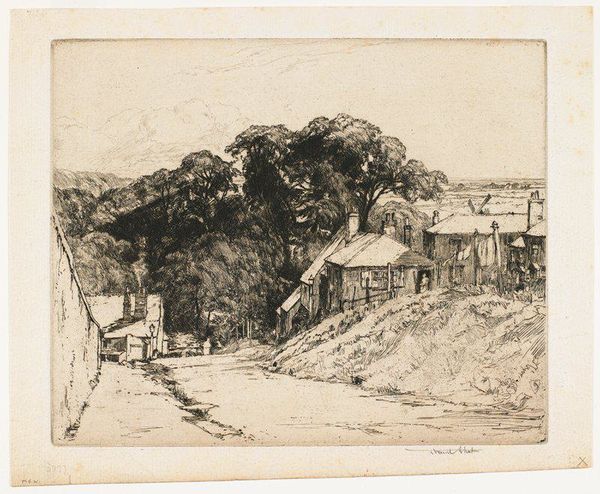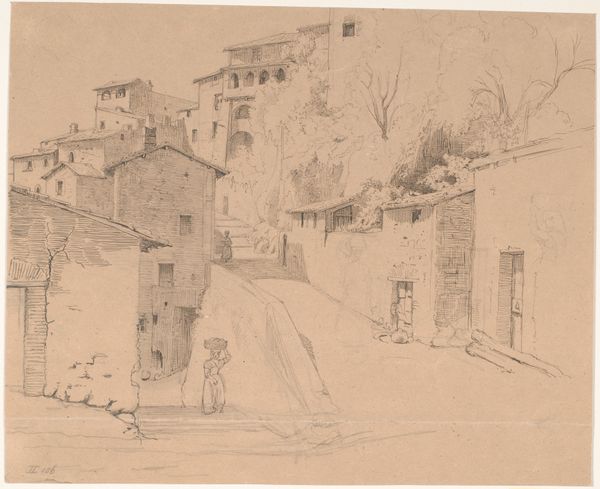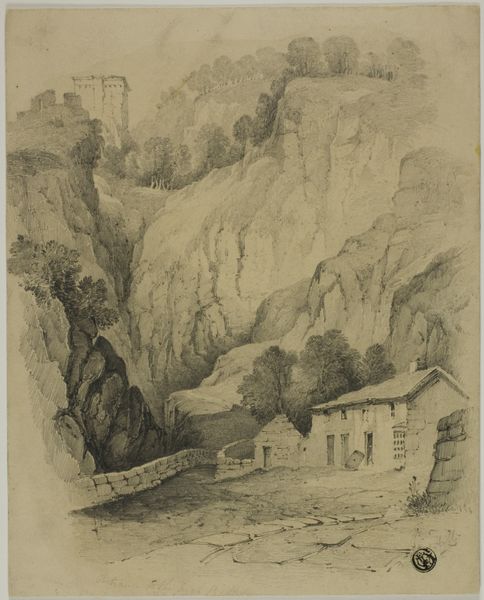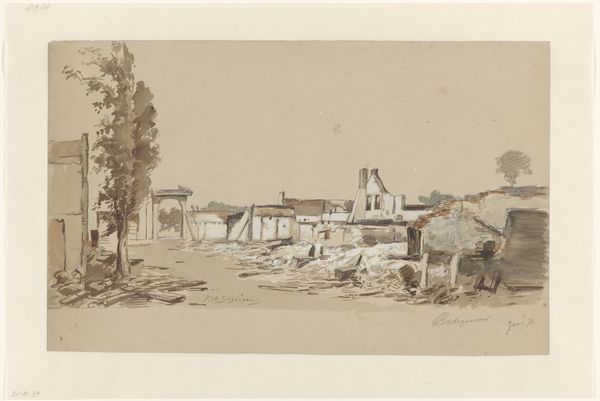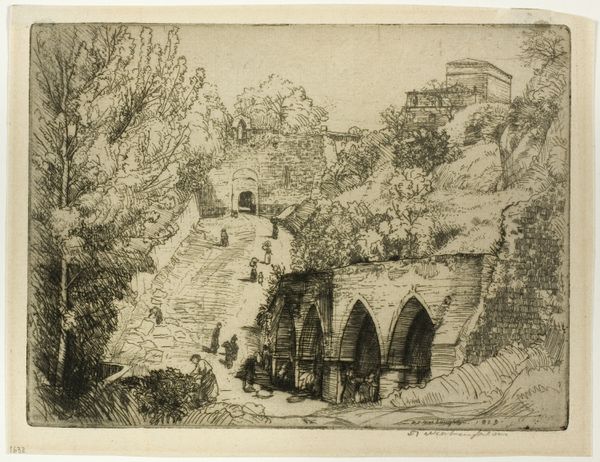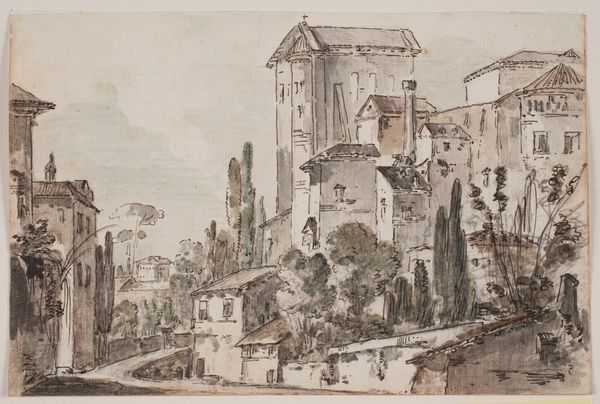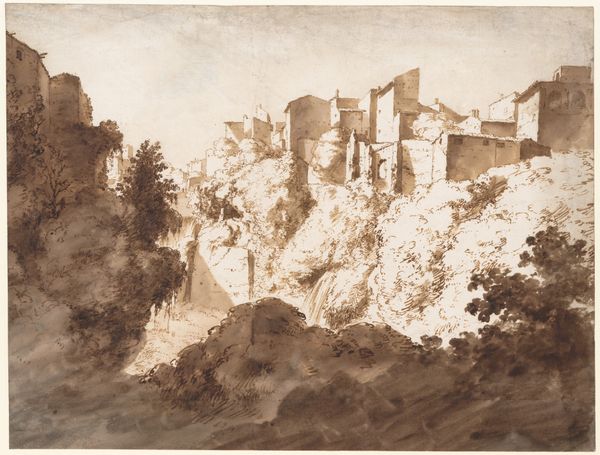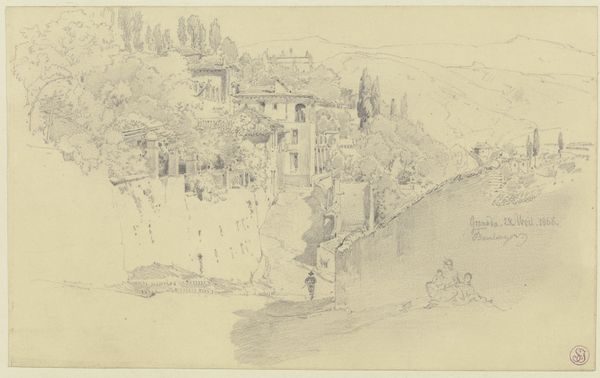
drawing, paper, ink
#
drawing
#
landscape
#
paper
#
ink
#
expressionism
#
modernism
Copyright: Public Domain
Editor: Hermann Lismann’s 1928 ink drawing, “Mont-Louis,” is just so striking! I’m fascinated by the dramatic use of light and shadow and that bird’s-eye perspective. What visual stories do you see woven into the landscape, if any? Curator: The stark contrasts certainly tell a tale. Note the almost unsettling energy created through the angular strokes—think of it as a visual memory of a place. Consider the Expressionist lens here, wouldn’t you agree, how do they heighten the emotion inherent in this image? Do the sharp, almost fractured lines remind you of woodcuts? Editor: Absolutely, I see that fractured quality. It makes me think about memory being fragmented and rebuilt. The little details, like the implied figures walking along the road or the tiny church, seem almost vulnerable against that monumental mountain. Curator: Precisely! Those human-scaled details are critical. Churches, dwellings, even mountain pathways—these are enduring symbols. Think about how landscape traditionally represented stability, refuge, or divine presence. Then consider the disrupted or energized brushstrokes employed by Lismann in this work. Can the same be said? How does the use of such chaotic visual signs relate to our memories of familiar environments or symbols? Editor: That tension between traditional landscape and Expressionistic disruption really clarifies it for me. The constant push and pull, the traditional subject but modern execution… Curator: Yes! It evokes a deeper consideration. Instead of pure nostalgic reflection, the symbolism and iconography reveal a more dynamic—perhaps even troubled—engagement with the cultural memory of "place." It speaks volumes!
Comments
No comments
Be the first to comment and join the conversation on the ultimate creative platform.
